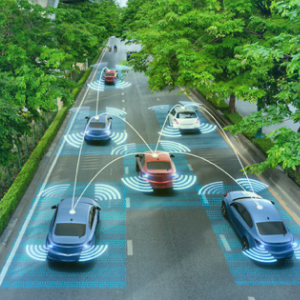With our expertise and commitment to excellence, we assist the automotive industry in mitigating risks and protecting against cyber threats
What is SAE J3061-2016?
SAE J3061-2016 is a cybersecurity guidebook published by the Society of Automotive Engineers (SAE) International. It is titled “Cybersecurity Guidebook for Cyber-Physical Vehicle Systems” and provides guidance on managing cybersecurity risks in automotive systems.
This guidebook was developed to address the increasing concerns surrounding cybersecurity in the automotive industry, particularly as vehicles become more connected and reliant on software and networked systems. It provides recommendations and best practices for designing, developing, and maintaining secure cyber-physical vehicle systems.
SAE J3061-2016 focuses on various aspects of automotive cybersecurity, including risk assessment, security-by-design principles, threat modeling, incident response, and ongoing monitoring and maintenance. It offers a comprehensive framework to help automotive manufacturers and suppliers implement effective cybersecurity strategies and mitigate potential cyber threats.
The guidebook is widely recognized and utilized within the automotive industry as a valuable resource for cybersecurity professionals, engineers, and other stakeholders involved in the development of vehicle systems.
It is worth noting that SAE J3061-2016 and ISO 21434 share similar goals of addressing cybersecurity in the automotive sector. While SAE J3061-2016 provides guidance specific to cyber-physical vehicle systems, ISO 21434 offers a broader framework for managing cybersecurity risks throughout the entire lifecycle of automotive systems. Both standards contribute to enhancing the security of vehicles and align with the industry’s efforts to address cybersecurity challenges.


Understanding the Significance of SAE J3061-2016 in Automotive Cybersecurity
Why should I care about SAE J3061-2016?
As vehicles become increasingly connected and reliant on software, the need for robust cybersecurity measures has never been greater. The potential risks associated with automotive cybersecurity breaches are vast, ranging from unauthorized access to sensitive data to remote manipulation of critical vehicle systems. The consequences of such breaches can be catastrophic, posing threats to user safety, brand reputation, and financial stability.
To address these concerns and establish a common framework for automotive cybersecurity, the Society of Automotive Engineers (SAE) developed the guidebook SAE J3061-2016. This influential guidebook provides comprehensive guidance on managing cybersecurity risks in cyber-physical vehicle systems. By adopting the principles outlined in SAE J3061-2016, organizations can establish a robust cybersecurity management system and ensure the trustworthiness of their products. Compliance with SAE J3061-2016 not only safeguards vehicles and their occupants but also demonstrates an organization’s commitment to security, thereby enhancing customer trust and confidence.
Ready to take the next step in securing the future of connected vehicles?
By downloading Riscure’s whitepapers, you’ll gain access to expert analysis, real-world case studies, and practical insights from their team of seasoned security specialists. Stay at the forefront of automotive security advancements and enhance your understanding of the latest vulnerabilities and countermeasures.

Automotive Security Checklist

Attacking AUTOSAR using Software and Hardware Attacks

Extracting and Analyzing Automotive Firmware Efficiently

Efficient Reverse Engineering of Automotive Firmware

Fault injection on automotive diagnostic protocols

Safety does not equal Security in Automotive
Exploring the Key Elements of SAE J3061-2016
SAE J3061-2016 provides a roadmap for effectively managing cybersecurity in cyber-physical vehicle systems. It covers various critical aspects, including:
Risk assessment: SAE J3061-2016 emphasizes the importance of conducting a comprehensive risk assessment to identify potential vulnerabilities and threats within automotive systems. The risk assessment process involves the following steps:
- Identifying assets: The manufacturer would identify the assets involved in the system, such as the vehicle’s electronic control units (ECUs), communication interfaces, and data storage components.
- Threat identification: They would analyze potential threats that could exploit vulnerabilities in the system. For example, threats might include unauthorized access, data breaches, or malicious manipulation of critical systems.
- Vulnerability assessment: The manufacturer would evaluate potential vulnerabilities within the system. This could include weaknesses in software components, insecure communication protocols, or inadequate access controls.
- Likelihood determination: The likelihood of each identified threat occurring would be assessed based on factors such as historical data, industry trends, and the system’s architecture. This helps prioritize risks based on their probability of occurrence.
- Impact analysis: The manufacturer would assess the potential impact of each risk, considering the consequences to user safety, data integrity, system functionality, and reputation. This analysis helps determine the severity of each risk.
- Risk prioritization: By combining the likelihood and impact assessments, the manufacturer would prioritize risks. This allows them to focus their resources on mitigating high-priority risks that pose the most significant impact and likelihood of occurrence.
- Mitigation strategies: Based on the identified risks, the manufacturer would develop and implement appropriate mitigation strategies. This might include incorporating security controls, improving system architecture, implementing secure coding practices, or conducting penetration testing.
- Monitoring and reassessment: The manufacturer would establish mechanisms for continuously monitoring and reassessing risks throughout the development and operational phases of the vehicle system. This ensures that emerging threats or changes in the system’s environment are promptly addressed.
Security-by-design
The guidebook highlights the significance of incorporating security measures into the design and development processes of cyber-physical vehicle systems. To implement Security-by-Design principles follow these steps:
Security requirements identification
The manufacturer would identify the necessary security requirements for the vehicle’s ECUs. This includes considering factors such as secure communication protocols, encryption mechanisms, access controls, and secure software update mechanisms.
Secure architecture design
The manufacturer would design the architecture of the vehicle system with security in mind. This involves segmenting the ECUs, implementing firewalls and intrusion detection systems, and establishing secure communication channels to prevent unauthorized access and data breaches.
Secure software development
The manufacturer would apply secure coding practices during the software development process for the ECUs. This includes practices such as input validation, secure data storage, and robust error handling to prevent vulnerabilities that could be exploited by attackers.
Why Choose Riscure as Your SAE J3061-2016 Compliance Partner?
Riscure is a trusted name in the field of device and automotive security, with years of experience helping organizations achieve compliance with industry standards. By choosing Riscure as your compliance partner, you benefit from:
- Expertise: Our team consists of highly skilled professionals with extensive knowledge of automotive cybersecurity and compliance requirements. We stay at the forefront of industry advancements, enabling us to deliver cutting-edge solutions tailored to your specific needs.
- Comprehensive services: Riscure offers a wide range of services to support your journey towards SAE J3061-2016 compliance. From risk assessments and security evaluations to training and ongoing monitoring, we provide end-to-end solutions to fortify your devices and automotive systems.
- Proven track record: Riscure has a proven track record of assisting clients in achieving compliance and enhancing their security posture. Our satisfied clients span across various industries, attesting to our ability to deliver reliable and effective solutions.
- Collaborative approach: We believe in fostering strong partnerships with our clients. Throughout the compliance process, we collaborate closely with your team, understanding your unique requirements and offering personalized guidance every step of the way.
Don’t let security vulnerabilities compromise the safety and trustworthiness of your devices and automotive systems. Partner with Riscure, an industry-leading device and automotive security company, to implement the principles of SAE J3061-2016 and strengthen your security posture. Contact us today to discuss your specific needs and discover how our expertise can safeguard your products, enhance customer confidence, and ensure a secure future for your organization. Together, let’s drive innovation while staying one step ahead of cyber threats.
Let's schedule a digital meeting
Automotive Publications

Automotive Security Checklist

Attacking AUTOSAR using Software and Hardware Attacks

Extracting and Analyzing Automotive Firmware Efficiently

Efficient Reverse Engineering of Automotive Firmware

Fault injection on automotive diagnostic protocols

Safety does not equal Security in Automotive
Get Started Today
Feel free to contact us anytime at inforequest@riscure.com or fill out the form below.
